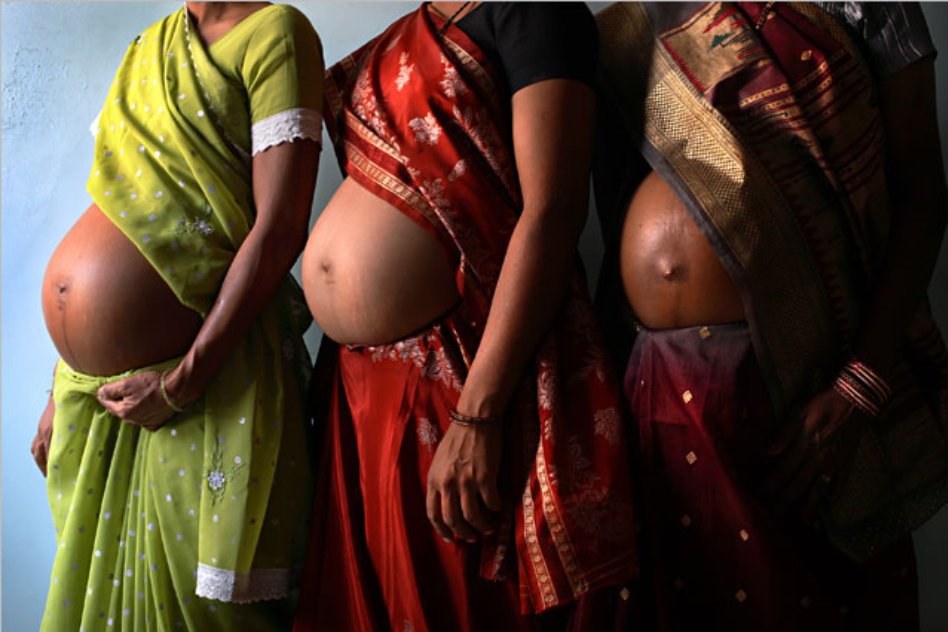
Surrogacy In India: Disorganized Sector, Problems Surrogate Mothers Face & The Way Forward
21 July 2016 6:50 AM GMT
Editor : Richa Verma Verma
I have done my graduation and post graduation in English Literature from Miranda House, Delhi University. Writing is my passion and I believe words have immense power which can shape the thoughts of an individual as well as the nation.
This is the second article in the series “Surrogacy In India”. You can read the first article here: Surrogacy In India : Meaning, Legal Status And The Flip Side
Surrogacy is not an organized industry in India
In 2002, surrogacy was legally recognized in India. Although the Indian Council of Medical Research had issued a set of guidelines for the surrogacy industry in India in 2005, they are not binding in nature. In order to bring the industry within legal frameworks, an Assisted Reproductive Technology Bill was drafted in 2010 by the previous UPA government at the center. The redrafted Bill in 2012 banned those foreigners from hiring Indian surrogates whose countries of origin did not recognize commercial surrogacy as it exists in India. The Ministry of Home Affairs issued a directive that if a foreign child born to Indian surrogates were refused citizenship in the home countries, foreign couple could come to India. However, the couple was problematically defined as a man and woman married for two years. Such a couple was also required to produce a letter from their government which stated that the home country would permit the surrogate child born in India to enter the home country as the biological child of the intending parents.
Yet another newly drafted Assisted Reproductive Technologies (Regulation) Bill, 2014, remains to see the light of the day – since it is not considered to be a matter of large public interest, it is often shoved under the carpet during parliamentary sessions. Thus, the various stakeholders in the surrogacy industry in India – from small clinics to big hospitals, tourism departments, health care professionals, surrogacy agents, law firms, surrogate homes, and travel agencies – remain unregulated as of now.
Problems which surrogate mothers in India still face:
A surrogate mother in India is largely unaware of existing legal or medical procedures and the risks involved in the process. She is the lowest rung of the surrogacy chain and remains the most vulnerable. She depends on the surrogacy clinics or agents for the deal and is not able to negotiate her own terms of the contract. All she does is sign the contract papers which are usually drawn in English. There is no prescribed interval between pregnancies or the maximum number of pregnancies allowed. This could have a telling effect on the surrogate mother’s health.
It is required that a surrogate mother should have proven fertility (married with children) and receive her husband’s consent for surrogacy. IVF is preferred over IUI in order to preserve the anonymity of the donor mother and to ensure that the surrogate is not the child’s biological mother.
In-vitro fertilization is riskier, more intrusive and more complex than intra uterine insemination. As stated already, for IVF more than one egg is fertilized to enhance the chances of survival of the fetus. This may result in more than one embryo developing which has to be reduced in number. After delivery, there is no follow-up care of the surrogate mother.
Perhaps the most awful disadvantage is that surrogate mothers are not legally recognized as “workers” in India since they do not sell mental or manual labour in the traditional sense of the term. Consequently, they do not have any legal rights.
The way forward:
In 2015, there was a controversy with respect to surrogacy and it was hinted that foreigners would be banned from reaping the benefits of Indian surrogacy industry. However, experts in the field of surrogacy opine that this would push the entire business underground, rendering the surrogate mother more vulnerable. This is what happened in Thailand, which was a popular destination for fertility tourism. When surrogacy was banned suddenly, it left in limbo the fate of several surrogate mothers at various stages of pregnancy as well as the intending parents who were at a loss as to how to collect their babies. Ultimately, the entire industry was pushed underground.
The need of the hour is to regularize the surrogacy industry in India so that the surrogate mothers are recognized as workers with proper legal rights, minimum compensation levels and a major share of the profits earned which are pocketed by the surrogacy clinics / agents instead. After all, they are the ones who lend their wombs for nine months. Hence, it is imperative that their voice and opinions be incorporated in any Bill which deals with surrogacy in India. They should have complete information and agency to make their precarious choices so as to guard themselves against unseen circumstances which may develop. They need to be made aware of the medical risks involved and legal framework to fall back upon in case the pregnancy falters. Their post-partum health needs to be tracked and taken care of.
Besides, there are a number of other issues that need to be taken into account while drafting any Bill related to surrogacy in India. Child rights, disability/congenital defects, queer rights, medical ethics are some of the major aspects related to surrogacy which need to be taken care of. The logical way forward is not to ban the surrogacy industry but to regularize it.
The Logical Indian community urges the government of India to introduce the draft bill on surrogacy in India, 2014, in the Parliament without any further delay. Debating on all the issues concerned and enacting a law on the same would bring about the much-needed regularization in this unorganized industry which will then benefit various stakeholders to the maximum. It would also set an age limit of 21-35 years, cap the number of pregnancies allowed to a surrogate mother (5 including her own children), and time interval between two pregnancies, leading to better health of the surrogates. Besides, it would broaden the horizon of intending parents by including anyone who wants to adopt a surrogate child irrespective of his or her marital status, sexual orientation, gender or nationality.
 All section
All section













